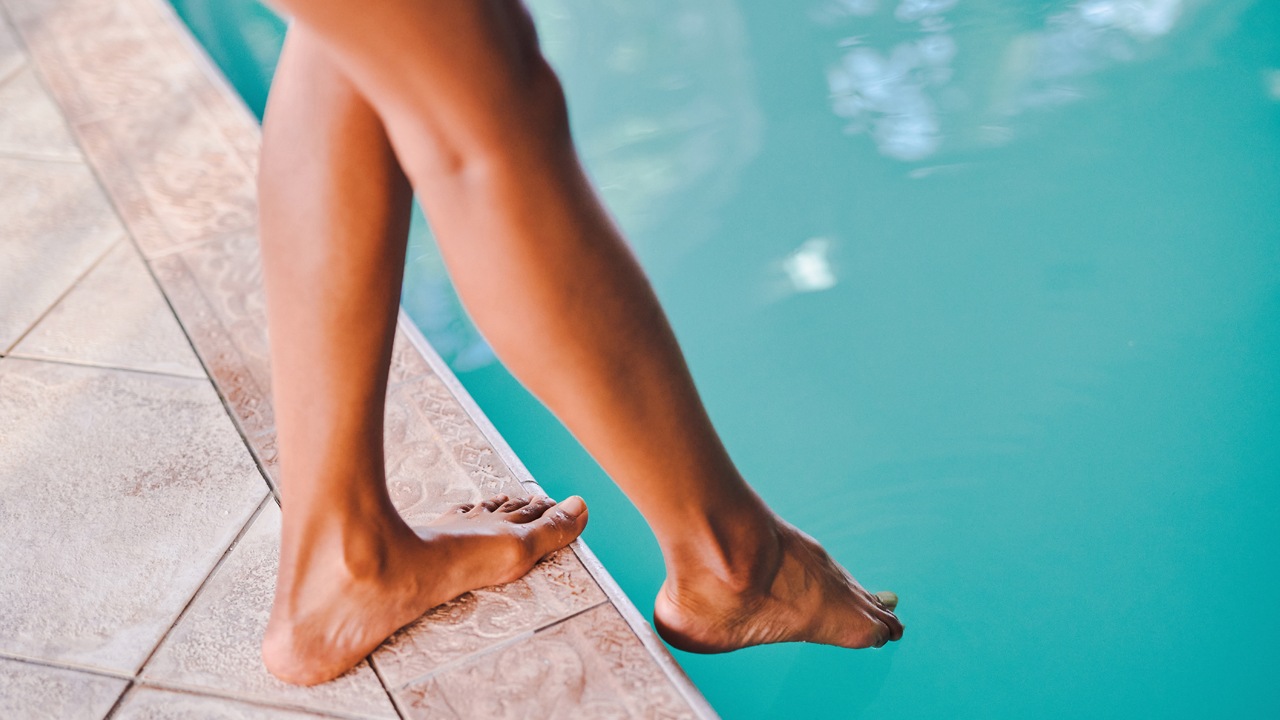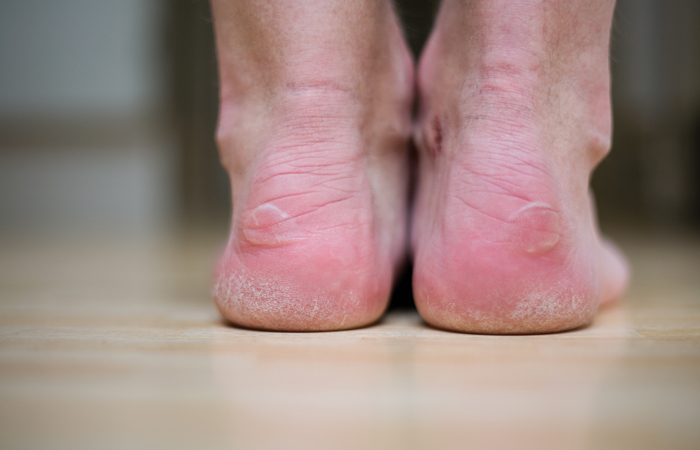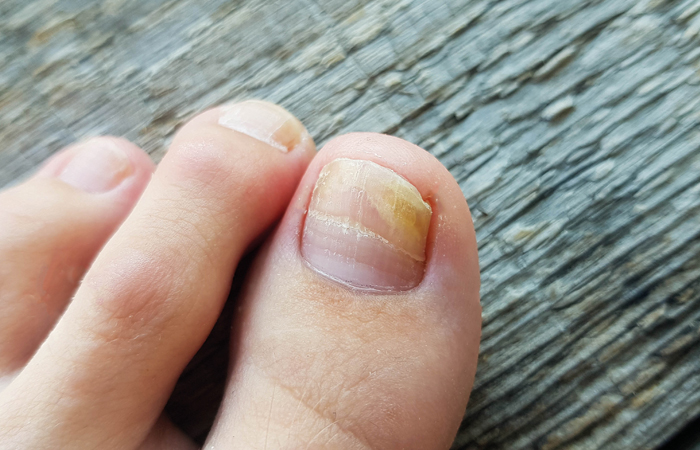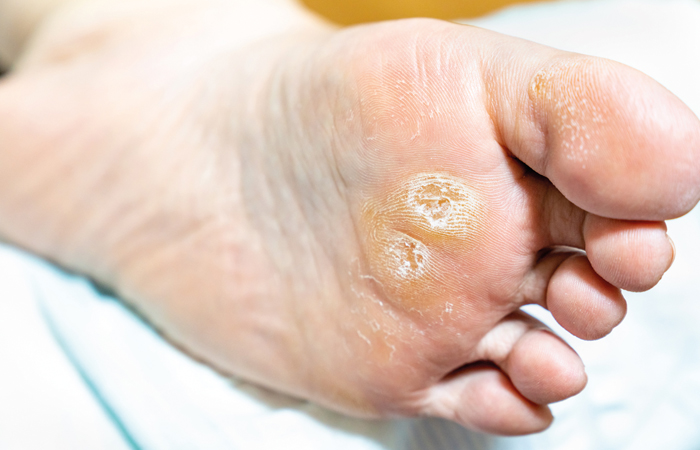In Conditions
Follow this topic
Bookmark
Record learning outcomes
Feet provide us with stability and balance, along with the grip and strength to walk and run. Each foot has 26 bones, 33 joints and a network of more than 100 tendons, muscles and ligaments, as well as over 7,000 nerve endings and 250,000 sweat glands. Furthermore, on an average day, a person takes 8,000-10,000 steps, so it’s not surprising that feet and legs can be prone to wear and tear, infections, injuries or friction from normal everyday activities.
“It’s important to adopt a regular foot care routine,” says Dr Jo McCardle, Scholl’s Expert podiatrist. “This will not only help keep feet soft and supple, but a regular checking of the feet mean that any problems can be picked up early.”
Many common foot and leg problems can be prevented or treated with over-the-counter (OTC) products. However, not all of these will be minor issues, so customers with ongoing symptoms should be referred to their GP. “Having cold feet and toes suggests poor circulation, which can be indicative of further issues, especially for those patients who have diabetes or are smokers,” says Sue Swift, Numark UK drug tariff and information technician. “A burning sensation or numbness and tingling in the legs and feet could be indicative of peripheral neuropathy, related to neurological problems, poorly controlled diabetes or even B12 deficiency. By being aware of these warning signs, pharmacy teams can ensure they are safeguarding their customers from conditions worsening.”
Stop the pop
Blisters tend to be caused by friction or pressure, often from badly fitting footwear (socks as well as shoes). It’s important to treat these fluid-filled areas of skin quickly to relieve any discomfort and prevent infections, especially in people with diabetes.
“Blisters form when fluid collects between the layers of the epidermis,” says Dr McCardle. “They can be tender and painful. To reduce pain and further damage, it is recommended a blister plaster is used.”
If a blister does occur, it’s important that it is cushioned rather than popped – this can lead to risk of infection or slow down the healing process. Blister plasters use hydrocolloid technology to speed up the healing process and protect the delicate skin from further damage. An open blister should be washed with mild soap and water, then covered with an antiseptic ointment and soft gel dressing.
Freeze!
Verrucas appear on the soles of the feet and look like small cauliflower-type growths with tiny black dots. Although these warts are harmless, they can be uncomfortable and painful if they develop on the weight-bearing part of the foot. Verrucas are caused by the human papillomavirus (HPV) and tend to occur in children and teenagers. They spread easily if people walk barefoot in moist, damp environments such as public changing rooms, shower cubicles and areas around swimming pools.
“The best advice to offer patients with a verruca is to prevent it spreading by not sharing towels, flannels, socks or shoes,” says Cathy Crossthwaite, Numark OTC business development executive. “Additionally, pharmacy teams should recommend customers cover the verruca with a waterproof plaster whilst swimming and wear flip-flops or other footwear in communal shower areas. Patients should also avoid picking or scratching at the verruca, seeking advice from their pharmacist to work out the best course of treatment.”
Verrucas may disappear on their own, but this can take up to two years in adults and six months in children. For painful or unsightly verrucas, pharmacy customers can buy various treatments over the pharmacy counter, including creams, gels and freeze sprays. It’s important to follow the product instructions carefully to avoid damaging the surrounding skin. If OTC treatments aren’t working, pharmacy customers should visit a podiatrist for further therapies, such as acid-based treatments, cryotherapy or needling.
Nailing it down
Toes are vital for walking and balance, so it’s important to take good care of them. Toenail appearance can change over time, especially as people get older, but this may sometimes indicate a serious underlying health issue.
“Healthy nails appear smooth and have consistent colouring,” says Dr Jo McCardle, Scholl’s podiatrist. “The aging process can cause some vertical lines and the nails can become more brittle; this is normal. Any other abnormalities to the nail, such as a change in colour, changes in shape (clubbing) or thickness, bleeding around the edges or pitted areas, may indicate underlying health conditions.”
Fungal infection
Yellow, brown or damaged nails are often a sign of a fungal infection. “Nail fungus is one of the most common issues affecting nails,” says expert podiatrist Dina Gohil of Mayfair Clinic and brand ambassador for Nailner. “People feel self-conscious or embarrassed to show their toenails, which often leads them to simply ignore the problem and hide their nails away. It’s not usually serious, but the infection can cause the nail to become brittle, thickened, discoloured or even to lift off completely.”
Over-the-counter antifungal nail creams, ointments and paints can be applied directly to toenails, while nail-softening creams can be used for two weeks to soften the nail so that the infected part can be scraped off. Some people may need to be prescribed anti-fungal tablets or have laser therapy or their toenail removed.
Dr McCardle says early intervention is recommended to prevent fungal infections from spreading to other nails. “The nail will take a while to fully recover as the entire nail will require to regrow (which takes around nine to 12 months),” she says. “If someone has two or more infected nails, a visit to the podiatrist or GP is recommended.”
Ingrown toenail
An ingrown toenail occurs when the nail grows into the surrounding skin, usually on the big toe. This can lead to pain, inflammation and sometimes an infection. Ingrown toenails may be caused by pressure or damage to the nails by tight shoes or injury from cutting the nails too short (or curved rather than straight across). If customers can’t cut their own toenails, they could try filing them instead, ask a friend or family member to help, or visit a local podiatrist.
Ingrown toenails should be assessed by a podiatrist. “A course of antibiotics may be needed to treat the infection,” says Kenny Chan, lead information pharmacist at Numark. “In more severe cases, podiatrists can remove part or the entire nail. Pharmacy teams can provide advice on how to prevent an ingrown nail – for example, using a soft nail brush to clean the area, trimming across the top of the nail rather than down the edges, or not wearing shoes that could pinch the toes.”
Crack on
Heels are particularly prone to dryness, as they generally carry the weight of the body, especially in people who spend a lot of time standing. Cracked heels become more common as people get older, as their skin naturally dries out. “A number of factors can raise the risk of developing cracked heels, including obesity and wearing open-heel footwear,” says Niamh McMillan, pharmacy superintendent at Superdrug.
Over time, cracked heels may become sore and itchy and bleed from the pressure. It’s important to use a rich moisturiser daily to keep the skin soft and smooth, even when the cracked skin has cleared up.
“Regular use of a moisturiser will prevent the build-up of the hard areas of skin,” says Dr McCardle. “If someone has diabetes, it’s worth asking if they have had their annual foot screening to ensure that they have been seen by a healthcare professional.”
Filing hard skin once or twice a week with a foot file will reduce the rough skin. Some people find that wearing socks or stockings or closed-in shoes, even in hot weather, will help the cracks to heal more quickly.
Stop the spread
Athlete’s foot is a common fungal infection. It’s often caught when walking barefoot in changing rooms and around swimming pools, but the fungus can also spread through direct person-to-person contact.
“Athlete’s foot tends to occur first in the skin between the toes, developing as a rash that then becomes itchy and scaly,” says Cathy. “It tends to spread and multiply in warm, moist environments, so it’s more common in people who wear socks a lot of the day, and people may be more susceptible to it in warmer months.”
Left untreated, athlete’s foot can spread to the toes, causing thickening and yellowing of the nail. This is much harder to treat, so it’s best to manage the infection as soon as the first symptoms appear. The most effective way to prevent and treat athlete’s foot is with good foot hygiene – washing the feet daily and drying them thoroughly (including between the toes).
Pharmacy customers can use a topical cream, spray or powder to treat the symptoms. These usually contain anti-fungal ingredients but sometimes a corticosteroid as well. Avoid using anti-fungal powders between the toes – these can be dusted inside shoes instead. Keep treating the infection even when the symptoms have cleared up, to make sure all traces of the fungus have gone.
Sweat the small stuff
There are more sweat glands per inch in the feet than anywhere else in the body. Many people get sweaty feet from time to time, especially when exercising. In teenagers and adults under 25, excessive sweating (hyperhidrosis) may be due to hormone levels, but it can also be inherited. Persistently sweaty feet can be very uncomfortable and may lead to unpleasant foot odour, caused by bacteria that live naturally on the skin or build up in shoes.
Detachable insoles (including deodorising or medicated versions) can help to absorb sweat inside shoes. If odour is a problem, wash the feet in anti-bacterial soap and rotate shoes regularly. “Try wearing cotton socks, as it is one of the most breathable fabrics,” says Niamh. “Using a foot spray in shoes before wearing them will help soak up any moisture, and using a foot deodorant can freshen and deodorise the feet.”
Corns and calluses
Corns and calluses are thick, hardened layers of skin that build up in response to friction or pressure. Corns are smaller areas, usually on the tops of the toes, bony areas of the foot and around the heel – they may be hard or soft. Calluses tend to be larger patches of hard, rough skin on the sole of the foot.
Corns and calluses aren’t usually serious, but they can become tender or sore. “Calluses can be removed with filing and moisturisation,” says Dr McCardle. “Exfoliating heel masks are very effective in removing the hard skin, but we recommend using one that is focused on the problem heel area. The use of a cushioning insole is a great way to keep calluses and corns at a minimum.”
Podiatrists don’t recommend people treat a corn or callus themselves without speaking to them first, as some products can burn the surrounding skin. “OTC treatments containing salicylic acid are available for corns,” says Dr McCardle. “However, caution is to be used in those with conditions that may cause changes to the skin, such as diabetes.”
“Verrucas may disappear on their own, but this can take up to two years in adults”
Varicose veins
Varicose veins are swollen veins under the skin, usually on the legs and feet. They occur when tiny valves inside the veins stop working properly so that blood flows backwards and accumulates, causing the swelling. This is more likely to occur in women, pregnant women, older people, people who are overweight, people who stand up for long periods, and those with a family history of varicose veins.
Varicose veins are very common and not usually anything to worry about as most people don’t need to treat them. They can cause troublesome symptoms, however, including aching and uncomfortable legs, swollen feet and ankles, burning or throbbing in the legs and dry, itchy skin. They may also lead to leg ulcers or skin discolouration.
Most doctors recommend these initial five steps to prevent and treat varicose veins:
- Exercise, such as walking, running, cycling and swimming
- Avoiding standing for long periods
- Raise the legs whenever possible, preferably above the level of the heart
- Aim to be at an ideal/target weight for height
- Wear graduated support stockings during the day.
“Pharmacy teams can recommend compression hosiery for their customers if they have varicose veins and have a family history of venous disease,” says Sue Swift, Numark UK drug tariff and information technician. “If the patient has swollen ankles, they must be assessed by their GP first before compression hosiery can be prescribed and provided by pharmacy staff.
“Open-toe stockings are an alternative option, which are easier to apply and are cooler in the hot weather. However, these can ride up the foot more easily and can exacerbate joint pain in the feet, so it’s important that pharmacy teams make individuals aware of this.”
If the above simple measures don’t help, a GP may refer a patient for treatments such as endometrial ablation (heat is used to seal the affected veins), sclerotherapy (closing the veins with a special foam), or ligation and stripping (to remove the affected veins). These treatments are not usually available on the NHS.




